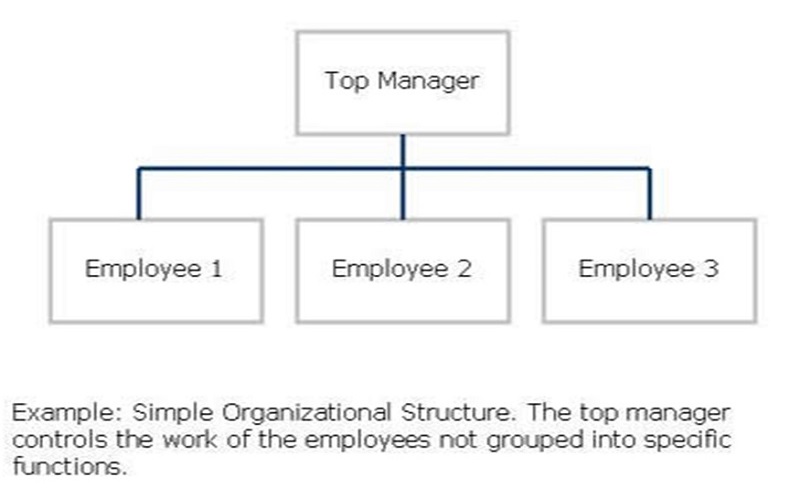i) Simple
1. Simple structure
. This is characterised by a low degree of departmentalisation, wider span of control, authority centralised in a single person and little formalisation. It is a flat organisational structure with two or three vertical lines, a loose body of employees, and one individual in whom the decision-making authority is centralised.
. This structure is most common in small businesses in which the manager and the owner are one and the same.
. The strength of the structure lies in its simplicity, as it is fast, flexible, inexpensive to maintain, and accountability is clear.
. Its major weakness is that the structure becomes increasingly inadequate as an organisation expands, owing to information and responsibility overload at the top. As size increases, decision-making becomes slower and slower. The other weakness is that the risk level is high when everything depends upon one person.

